From the Candid Chronicle by Michael Sands June 16 2021
Steel cranes continue to load containers full of raw tobacco leaves into ship holds in the bustling Indian Ocean port of Beira, Mozambique, ready for export to processing companies throughout the world. However, as smoking becomes less popular around the world and individuals seeking a nicotine fix increasingly choose to vaping, the amount of tobacco loaded at Beira has decreased in recent years.
Although public health professionals may cheer this development, it has caused disquiet in Beira and throughout Sub-Saharan Africa, where tobacco’s large, green leaf serves as a vital economic warp thread. This is especially true in Malawi, Mozambique’s landlocked African neighbor, which produces the majority of the tobacco transported via Beira. Tobacco accounts for more than 10% of Malawi’s GDP and 60% of its exports, but the yearly value of its yield has been cut in half in the last decade, to just $210 million. The government has battled to keep the value of its currency, the kwacha, after losing significant foreign exchange reserves.
So it’s no surprise that Malawi’s President, Lazarus Chakwera, has been pressing his country’s farmers to switch to other crops instead of tobacco. What’s more shocking is that one of Chewkra’s most popular alternatives is marijuana.
In a speech last month, he added, “Clearly, we need to diversify and produce other crops like cannabis, which was legalized last year for industrial and therapeutic use.” Malawi’s regulations were recently changed to allow for cannabis production investment, and 35 firms have been granted licenses to produce the plant.
Crop for Profit
Malawi isn’t the only African country to consider cannabis to be a gold mine. The drug has been legalized or decriminalized in areas of the United States, Canada, and Europe, with sales surging, particularly during the COVID-19 pandemic. African countries such as Zimbabwe, Zambia, Uganda, Kenya, the Democratic Republic of the Congo, Lesotho, South Africa, and Ghana have taken steps to encourage cannabis production as a legal cash crop. According to a report published in 2019 by Prohibition Partners, a research and consultancy organization specialized in the legal cannabis sector, Africa’s cannabis sector might be worth $7.1 billion by 2023.
Meanwhile, foreign marijuana corporations are rushing to Africa with the expectation of profiting. EXMceuticals, Canopy Growth, the Supreme Cannabis Company, and Aphria (which merged with rival Canadian marijuana firm Tilray), as well as Israel-based Together Pharmaceuticals and the United Kingdom’s Medi Kingdom, have all invested in cannabis growing in Africa in the last five years.
Africa’s potential as a source of production and prospective sales has been lauded by ICan, an Israel-based organization that provides consultancy services to the cannabis sector and helps incubate businesses in the field. In a blog post for The Times of Israel, Saul Kaye, iCan’s CEO, said, “With vast acreage, an experienced labor force, and climates suited to cannabis growth, cannabis might contribute to a continent-wide economic boost if legitimized.”
Buzz is a Killer
So, as Kaye argues, would marijuana be the salvation of Africa’s economies? Many international specialists have reservations. For one thing, while farmers in many parts of Africa have long grown marijuana for recreational or religious purposes, and have occasionally profited from the illegal drug trade. The varieties of marijuana plants grown by these small-scale growers are not the same as those approved for large-scale cultivation, according to Chris Duvall, a geography and environmental studies professor.
The worldwide market is predominantly focused on plant species with high cannabidiol (CBD) yields, such as hemp, but the types of marijuana traditionally grown in Africa, some of which do command high prices in the criminal market, are those varietals with higher tetrahydrocannabinol yields (THC).
“Those aren’t the ones that African governments are investing in,” adds Duvall.
CBD and THC are both psychotropic chemicals, but their effects on the brain are very different. THC is the chemical that gives individuals a sensation of euphoria, of being high, when they smoke marijuana. CBD, on the other hand, is the component of the medication that helps individuals feel relaxed. The latter has been shown to aid with a range of medical issues in clinical research, including anxiety, sadness, pain, nausea, and seizures. CBD has been approved for medical usage in many places, whereas THC remains banned, despite the fact that it has also been found to treat pain and anxiety.
Duvall believes that Africa is missing out on a potential opportunity by ignoring local cannabis strains with well-known geographic-related brands, such as “Malawi Gold” and “Durban Poison,” which may be cultivated as single-origin cannabis “appellations” similar to those that exist for wine. He continues, “Right now, it is a new global sector, and Africans are in a position to define the tone and regulations, as well as address the problem of uneven trade.” “They should spend a lot of time thinking about how to make it a more equitable industry.”
Africa’s Conundrum
Instead, the need to ensure that cannabis produced for the legal market has a consistent chemical composition, especially for medicinal uses, has meant that even in Africa, where growing conditions are ideal, much of the crop must be grown in greenhouses and carefully irrigated and monitored.
As a result, Duvall claims that local farmers are largely excluded from the burgeoning market, with profits going to international companies with few local employees and facilitation companies owned by people with government connections who have helped them obtain licenses.
According to Blessings Chinsinga, a professor of public policy at the University of Malawi’s Chancellor College, this has clearly been the case in Malawi.
Chinsinga says that all of the enterprises that have received licenses so far are either multinational corporations or local businesses controlled by elites. According to him, the license fees are even quoted in US dollars rather than local currencies. In a country where the average monthly income is only about $200, they range from $1,000 to $10,000, considerably beyond the grasp of most Malawian farmers. He further claims that the new government criteria for cannabis production permits demands that applicants demonstrate that their product has a market, something most indigenous growers are unable to do. Only multinational marijuana enterprises can demonstrate that they have a customer base.
Worse, an explicit quid-pro-quo of legalizing large-scale cultivation of high CBD-yielding cannabis varieties has been greeted with a renewed crackdown on small-scale production for the illicit market in Malawi, Lesotho, and many other regions of Africa, according to Duvall. While many African countries have approved industrial cannabis production, fewer have relaxed drug regulations to allow consumers to consume locally produced cannabis legally. Reforms aiming at legalizing small-scale artisanal marijuana growing and enabling personal cannabis use have only been adopted or proposed in South Africa, Kenya, and Morocco.
Meanwhile, present cannabis production plans are insufficient, according to Chinsinga, in terms of replacing tobacco as an economic driver in Malawi, which he feels is a necessity for the country. Small farmers cultivate barely over an acre of land to grow the majority of tobacco. According to Chinsinga, these farmers rely heavily on government subsidies to buy basic agricultural inputs like seeds and fertilizer. Finding an alternative source of income for all of these people will require a significant investment in training and subsidies, he argues, and the money the government has so far earmarked for cannabis growing is insufficient to transition most farmers away from tobacco.
Previous attempts to create a tobacco alternative, such as soya beans, pigeon beans, and crushed almonds, have also failed, according to Chinsinga. One of the problems is that it leaves farmers vulnerable to unpredictably fluctuating foreign prices. When soya bean prices are high one year, many small farmers hurry to plant those beans the next year, resulting in a glut and lower prices the following year, on top of the likelihood that the international price has also plummeted, leaving farmers poor. “It’s really tough without a nationally structured market to buffer farmers,” he says.
This dilemma is exacerbated in the case of cannabis because the legal industry is still young and awash in faddish, speculative cash that might evaporate as quickly as a bong hit if investing fashions change. Some of the Canadian marijuana businesses who rushed into Africa with cash from stock exchange debuts, such as Tilray and Canopy Growth, have already indicated plans to pull back.
Malawi and other African countries looking to boost their economies may be burned if the nascent bud industry loses its luster.


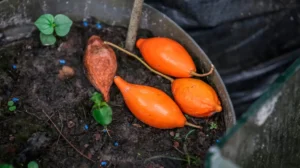


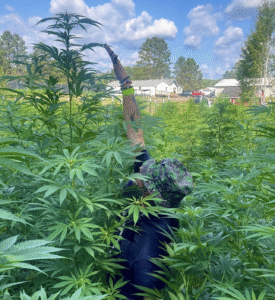
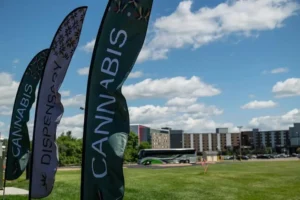





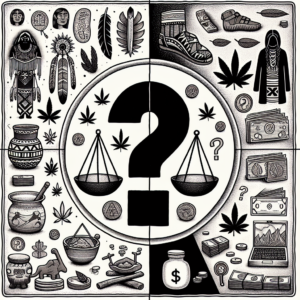



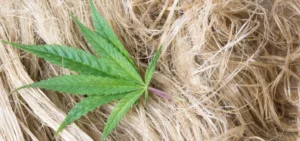
Comments are closed.